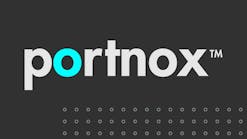Managing high volumes of document printing within a large organization poses economic, logistic and security challenges. These challenges can be solved with today’s single-function printers and multi-function print (MFP) systems that include embedded multi-technology card and mobile access readers. The solutions enable convenient authentication while providing complete visibility of operations and allow organizations to easily monitor expenses, generate reports, and improve document security and workflow efficiency. At the same time, these systems give users the convenience of a “follow me” print model that enables them to release jobs in the locations where they are needed.
Security Meets Efficiency and Convenience
The energy and maintenance costs associated with print systems can be difficult for large organizations to minimize. Most organizations also generally purchase more printers than needed to cover surges in demand. For their part, employees often duplicate print jobs to avoid delays due to long print queues, which becomes a security risk when the first request eventually prints, and sensitive documents are left to potentially be retrieved by unauthorized people.
The latest print systems solve these problems, improving security while also enhancing efficiency and convenience. The printers incorporate embedded multi-technology card readers that enable an easy authentication process for releasing print jobs. Users can authenticate with traditional ID cards as well as their mobile devices, taking advantage of mobile access reader technology that uses Bluetooth Low Energy (BLE) technology to connect with iPhone, Android and Google devices.
A major bank in Chile provides an example of the benefits of using print systems with embedded multi-technology readers. Its 14,000 employees can now store their print requests on a central MFP server and use the solution’s “follow me” capabilities to securely retrieve their documents at any MFP in the facility. All bank employees’ ID cards were upgraded to include a combination of building access and print authentication credentials. Connecting the printers over a network has also ensured that documents can be sent from one branch to another, anywhere in the country.
Employees authenticate to the bank’s printers by tapping their ID badges to the readers (embedded inside the printer to maintain the equipment’s clean appearance), which uses near field communication (NFC) technology to connect with the ID badges. A helpful “Tap Here” sign identifies where employees need to present their ID cards for authentication.
The bank implemented this print solution at its 400 branches, seven corporate buildings and one centralized print center. The deployment has enabled the bank to reduce its overall printer needs, have increased control over paper, ink and other consumables, and has helped ensure that only authorized users retrieve printed documents. It has also eliminated wasted energy and costs incurred from duplicate print jobs that result from congested queues.
Print volumes have also been reduced by about 20 percent, and what previously required 6,000 printers is now accomplished with just 2,500. The printer-to-user ratio has dropped to about one per every four employees, and an even better ratio of about one per eight employees at corporate locations. These reductions have resulted in substantial savings since larger document volumes are printed using fewer, more intelligently managed devices.
The bank also has comprehensive insight that will enable it to analyze and manage its printer operations while simultaneously providing its workforce with secure and convenient printing experience.
Adding a Mobile Experience
The convenience of today’s single-function printers and MFPs can be further enhanced by enabling user authentication via mobile access technology for mobile devices. To securely release print jobs from print management applications with this approach, users simply hold their devices near the reader to log in to the printer. Single sign-on also provides users with streamlined access to advanced scan workflow and other state-of-the-art capture and routing applications. By allowing users to replace cards with mobile devices and eliminating the need to enter a username or password, banks take authentication to an even higher level of security and convenience without compromising print/scan performance or data security.
Technology Recommendations for Manufacturers
When adding these capabilities to their MFP product offering, printer manufacturers should choose an embedded reader solution that supports as many card technologies and interface protocols as possible. In addition to mobile access, the readers should simultaneously support HID Proximity and Indala®, iCLASS®, iCLASS SE®, iCLASS® Seos® and iCLASS® Elite1 card authentication, as well as MIFARE Classic™ and MIFARE DESFire™ with Secure Pull Print operation that saves time and effort. The embedded readers should be compact enough to allow for easy integration with their products via a USB connection and be compliant with regulations including the Health Insurance Portability and Accountability Act of 1996 (HIPAA) and Family Educational Rights and Privacy Act (FERPA).
As organizations look for better ways to improve security while managing costs and improving efficiency, document printing is emerging as a key focus area. Today’s print systems use embedded access control readers that enhance document security, improve user convenience, increase the efficacy of equipment investments and significantly reduce printing costs. This is accomplished without compromising printing or scanning performance and gives users the valuable ability to release jobs with their ID badge or mobile device further improving convenience in today’s increasingly connected workplaces.
About the Author: Gary Oberman is Vice President, America’s Sales & OEM Solutions with HID Global.


